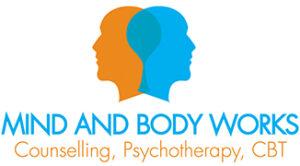Attention deficit hyper disorder (ADHD) is a disorder that is categorized by symptoms that include inattention, hyperactivity, impulsivity and more. While the symptoms of ADHD can be quite prevalent in childhood they can also have an effect in adult life too, especially if the disorder is not diagnosed early in life. There are many common misconceptions about ADHD. Children can be labelled as hyper, lazy or a ‘dreamer’, but these labels are usually attached due to the behaviours that present themselves within someone with ADHD. Children with ADHD can find it hard to settle themselves as they require a high level of stimulation within their environment. While this may be possible to manage in the home, but if the child is in a group setting such as school it can be harder to meet their needs. It can be difficult for a child to recognize that their behaviours are being disruptive and can lead to feelings of internalized guilt that they do not act like everybody else.

Although ADHD is starting to become better understood than it was previously there are still quite a lot of myths about the disorder that reinforce old ADHD stereotypes. By understanding ADHD facts and myths we can understand the disorder better, and this can also allow us to accommodate for those who are experiencing the disorder.
Some of the most common myths about ADHD are:
- ADHD is not a real medical disorder
ADHD is recognized as a medical condition. Many health organisations would classify it as having a biological basis due to a chemical imbalance of neurotransmitters in the brain. While there is not much evidence about the biological causes of ADHD, it can be seen that there are some genetic factors involved. In most cases if a child is diagnosed with ADHD it is likely that a parent also has the disorder. A diagnosis of ADHD is usually provided based on symptom presentation. The Diagnostic and Statistical Manual of Mental Disorders (DSM) is one of the main tools used when diagnosing ADHD. If your child presents with 6 or more symptoms from the DSM criteria this can be a high indicator for the presence of ADHD. - Children with ADHD just need to focus
When thinking about children with ADHD, their lack of focus can be greatly misunderstood. Children may find it hard to pay attention when in class or having to read something they are not interested in. This may seem like you need to teach a child to apply themselves to a boring task, but for someone with ADHD it can be difficult for them to motivate themselves if they are under-stimulated. If you presented them with an action-packed video game however they may be able to apply their full attention to the point that they cannot break themselves away from it. This is called hyperfocus. It is a myth that a child with ADHD cannot focus. If they are in an environment that does not draw their attention, it is simply more likely that they will not engage. - People with ADHD are just lazy
This is a common myth about ADHD which also can be quite damaging to a child if they are consistently being labelled as ‘lazy’. This mainly stems from the difficulties in executive functioning that can occur with ADHD. It can be hard for a child to finish a task or motivate themselves if they are feeling under-stimulated. If a child with ADHD receives positive feedback or encouragement for the work that they are doing this can really help them to stay focused on the task at hand. This is because there is a reward benefit in receiving praise. By understanding that some children need this reward to help them to keep their attention, the parent or family can teach the child about how their brain works. This can also help with their functioning in later life as a teenager and adult. - All kids with ADHD are hyper
This is another common myth that plays heavily into the stereotype of the hyperactive, impulsive, wired ADHD child. While hyperactivity can be a symptom of ADHD it is not always the determining factor of the disorder. There are three subtypes of ADHD: predominantly hyperactive-impulsive, predominantly inattentive, and combined type. Predominantly hyperactive-impulsive is usually characterized by a child constantly being in motion, excessive talking and impulsive behaviours, the predominantly inattentive child is seen as being a day dreamer, has difficulty paying attention and can have issues in organizing themselves. Most children diagnosed with ADHD would fall into the combination subtype in that they demonstrate behaviours that are both hyperactive and inattentive. - Only boys can have ADHD
It is true that boys are twice more likely to be diagnosed with ADHD than girls, but this does not mean that girls cannot have ADHD. The reason behind this myth is that ADHD presents itself different in girls than in boys. Girls would usually present as the inattentive type while boys may show more hyperactive tendencies. As a result, this disorder may be overlooked in female. This can cause a later life diagnosis for many women as their symptoms may have gone unnoticed during childhood until it begins to have an impact on their functioning. Girls can also show signs of hyperactivity. This can show itself in different ways such as being overly emotional or being extremely talkative. Perfectionism can emerge in girls with ADHD, the need to do well, and focusing in on the small details can be seen as an overcompensation for managing their symptoms. - ADHD only affects kids
The symptoms of ADHD can seem more obvious within a child. However it is a myth to say that adults do not have ADHD. It is not a disorder that disappears as we age. If the disorder is managed properly from a young age the symptoms can lessen as you grow older. As we grow, we learn patterns of behaviour that we use to navigate ourselves through our world. This can range from how we interact with people, to how we organize ourselves to get through the day, and also to how we apply ourselves to our work. For people who are diagnosed earlier in life with ADHD, their patterns of behaviour can be learned around managing their symptoms. The issue with ADHD in adulthood is that many adults can go through their life undiagnosed. As adults, they may not understand what ADHD actually. They can then see negative behavioural patterns emerge as a result of years of overcompensating to keep up with everyone else. Earlier diagnosis can be really helpful in offsetting some of these negative behavioural patterns from developing. - Children with ADHD do not need any extra help
This is another myth that can be damaging to children with ADHD. The brain processes information in a different way with ADHD. Therefore it can be difficult for a child to keep up with other children when they are learning. In a classroom if a child is easily distracted, feels under stimulated, or lacks motivation while everybody else in the class can focus, it can be difficult for them to feel accommodated. This is why accommodations such as extra time on a test or helping a child feel engaged in their work can prove to have beneficial results in their learning.
There are a number of stereotypes of ADHD that have emerged due to a lack of information about the disorder but the truth about ADHD is that it is a manageable disorder once you can understand it. While medication is sometimes seen as the first mode of treatment, if it is used in conjunction with a form of behavioural therapy this combination can help encourage anyone with ADHD to build coping skills to help manage their disorder and have a healthy functioning life.
